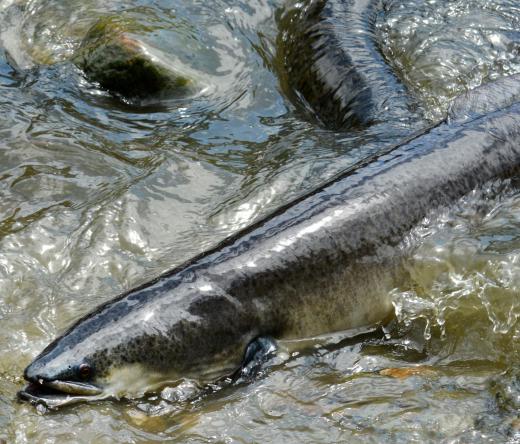What are Chordates?
 Michael Anissimov
Michael Anissimov
Chordates include the vertebrates and a couple close cousins, the tunicates (sea squirts) and lancelets, primitive aquatic animals. In scientific classification, Chordata is one of 38 phyla of animals, one of the "big nine" along with Mollusca, Porifera, Cnidaria, Platyhelminthes, Nematoda, Annelida, Arthropoda, and Echinodermata. The precise origin of the chordates is unknown, but fish- or lancelet-like fossils from the Cambrian show that they existed at least 530 million years ago, during the so-called Cambrian explosion of biodiversity. The defining characteristics of chordates are a hollow dorsal nerve cord, a notochord, pharyngeal slits/pharyngeal pouch, an endostyle, and a post-anal tail.
The earliest chordates are found in the Chengjiang fauna of fossil beds in China, dated to 520-530 million years ago. Eight possible chordates are found in these fossils beds. The most famous is Myllokunmingia, a primitive, probably agnathan (jawless) fish, the first vertebrate to appear in the fossil record. It possessed a skull and what looks like a primitive notocord. Vaguely resembling a modern hagfish, Myllokunmingia was about 2.8 cm (1.1 in) long and 6 mm high, quite tiny. A related chordate is Haikouichthys ercaicunensis, another primitive fish-like animal. Another enigmatic fossil, Yunnanozoon lividum ("Livid Animal of Yunnan") is either a chordate or a hemichordate, a closely related phylum.

Chordates went on to become one of the most successful of all animal phyla, colonizing the land and sea and becoming the fourth most diverse phylum, after arthropods, nematodes, and mollusks, with over 100,000 species. The primary innovation of chordates was a central nerve cord, which evolved into a backbone. This provided a designated highway for nerves, allowing greater neurological complexity and motor control. The backbone provided a way for animals to become more robust without using an exoskeleton.
Some familiar chordates include fish and eels, including jawless fish such as lampreys, sharks, rays and skates, amphibians, reptiles, birds, and mammals, including humans. There are a number of extinct groups in phylum Chordata, including spiny sharks, armored fish called placoderms, the dinosaurs, and numerous ancient tetrapods including some of the first animals to colonize land, then the first animals to colonize continental interiors.
AS FEATURED ON:
AS FEATURED ON:











Discuss this Article
Post your comments